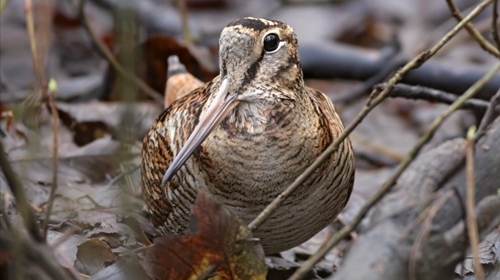
If you’ve taken part in the GWCT/BTO ‘annual’ woodcock surveys before, please consider getting involved again this spring – now is the time to begin the first counts. Your participation in the survey is helping to produce a long-running dataset (18 years and counting) that helps us gauge yearly fluctuations in breeding woodcock numbers. Key to this is the repetition of previously surveyed sites, so if you are registered for the survey, and have taken part before, we encourage you to revisit your chosen site. You can refresh your memory of the survey methods and enter your data here.
And please remember that all results, including zero counts, provide valuable information. It is not vital that a site is visited every single year, only that it is repeated, so if you have missed a year or two, it is not too late to resume counting!
If you haven’t taken part before, then it is not too late to get involved.
Background
In 2003 and 2013, surveys of breeding woodcock took place at around 800 randomly selected sites across the UK. The surveys were designed to estimate the size of Britain’s breeding woodcock population and give a single snapshot of woodcock abundance. In our annual surveys, a subsample of the survey sites are revisited on a yearly basis (approximately 150 sites), allowing us to measure finer-scale changes in population trend.
Taking part
The full list of available survey sites, and survey instructions, are available on the BTO website (our collaborators on this project).
If there is an unsurveyed site near you, you’ll be able to sign-up to cover the site for us. All you need to do is make three dusk visits to the site and count roding woodcock for 75 minutes. Roding is the conspicuous display that male woodcock use to attract a mate, and it’s highly likely you’ll see roding males at any site where woodcock breed.
Roding Surveys and Covid-19
Volunteer surveys are permitted in most parts of the UK, but please check local restrictions before taking part and adhere to current guidelines regarding social distancing and group size.